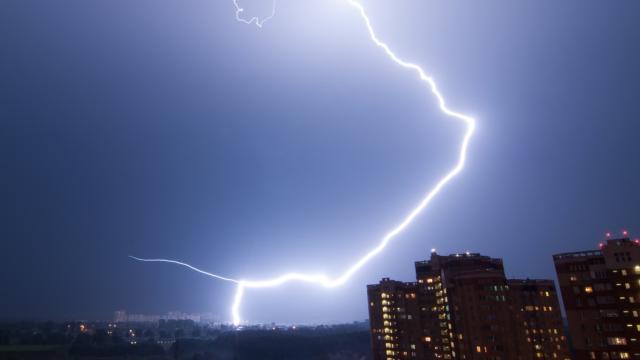Many facilities experience power quality problems, and transients are one of the most common. What are transients? They are brief, non-repetitive voltage spikes or waveform distortions in an electrical system. Transients can originate both outside and inside your facility. They can disrupt or damage critical electronic equipment. A number of solutions are available to help protect your facility against transients.
How Transients Occur
Voltage spikes can originate outside of your facility through lightning, neighboring plants or work areas that start or stop large equipment, such as motors or presses.
Spikes can also originate from inside your facility. When large motors, relays and other inductive devices are shut down, the voltage that was flowing to them has nowhere to go and must be absorbed into the surrounding wires, as well as into other devices. Some internal transient voltages can reach as high as 2,500 volts in a fraction of a second, with very damaging results.
Capacitor switching can also cause voltage transients. When power factor correction capacitors are switched on, line voltage falls, followed by a sudden rise. This process repeats until the system settles down within one half-cycle. After the initial voltage drop, there is an oscillation caused by the interaction between the capacitor bank and the system inductance. Disruptive transients can travel through the grid and create problems for motors, process controls and other electronic devices.
Transient Protection Solutions
A number of surge protection devices are available to protect your facility and its critical equipment.
A surge protection device (SPD) is a fast-acting instrument used for lower-voltage transient attenuation. It acts by clamping the line voltage to a specific value and then conducting any excess impulse energy to the safety ground, regardless of frequency. The energy shunting capability is best expressed by its nominal discharge/short-circuit current rating as specified by the UL 1449: Surge Protective Devices standard.
Surge suppressor panels, receptacles and power strips use solid-state metal oxide varistors (MOVs) as the suppression element. At low voltages, the MOV has a very high resistance, passing very little current. At high clamping voltages, the MOV has low resistance, causing the voltage surge to travel through the MOV to ground, effectively suppressing the applied voltage. MOVs are grouped by their voltage rating and energy-handling ability. The voltage surge energy is absorbed by the MOV and converted into heat.
Another possible solution, especially for electromagnetic interference (EMI), is the use of armored/shielded cable, a common-mode choke coil or EMI filters. An R-C Snubber (a resistor in series with a capacitor) can mitigate transients from vacuum circuit breakers.
To select the right solution for your facility, carefully evaluate your electrical system, electronic devices and your protection needs.
February 2023 Connections Newsletter
From industry trends and best practices to sustainability initiatives, our monthly Connections Newsletter provides valuable insights, updates, and resources to support our large business customers.
